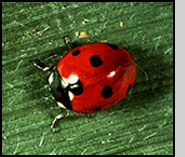

urticae over control up to 21 days and the rest of the pesticides showed up to 14 days. In potted bean plants, abamectin, abamectin + bifenthrin and chlorfenapyr showed significant mortality of T. On the other hand, thiamethoxam, imidacloprid and spinosad showed 63%, 65% and 71% egg mortality, respectively. Abamectin + bifenthrin and chlorfenapyr caused 100% egg mortality followed by application of abamectin (95%) and deltamethrin (82%). urticae eggs was examined, the egg mortality for all pesticide treatments was significantly higher than the control. urticae within 3 h, abamectin + bifenthrin within 6 h and other pesticides within 48 h except for imidacloprid and thiamethoxam. In the laboratory trials, abamectin caused 100% mortality of T. The present study was carried out to determine the direct and residual effects of seven pesticides, namely abamectin, abamectin + bifenthrin, spinosad, chlorfenapyr, deltamethrin, imidacloprid and thiamethoxam against Tetranychus urticae Koch (Acari: Tetranychidae) and residual toxicity of these pesticides against the pest and its predator Coccinella septempunctata (L.) (Coleoptera: Coccinellidae) adults.

urticae and natural enemies, while determining the overall efficacy of pesticide use. In particular, the degree of pesticide exposure is associated with the adult stages of T. The results of using pesticides are more predictable if there is detailed information about their toxicity and specificity. Pesticides are used to control Tetranychus urticae Koch populations in country bean, Dolichos lablab (L.).


 0 kommentar(er)
0 kommentar(er)
